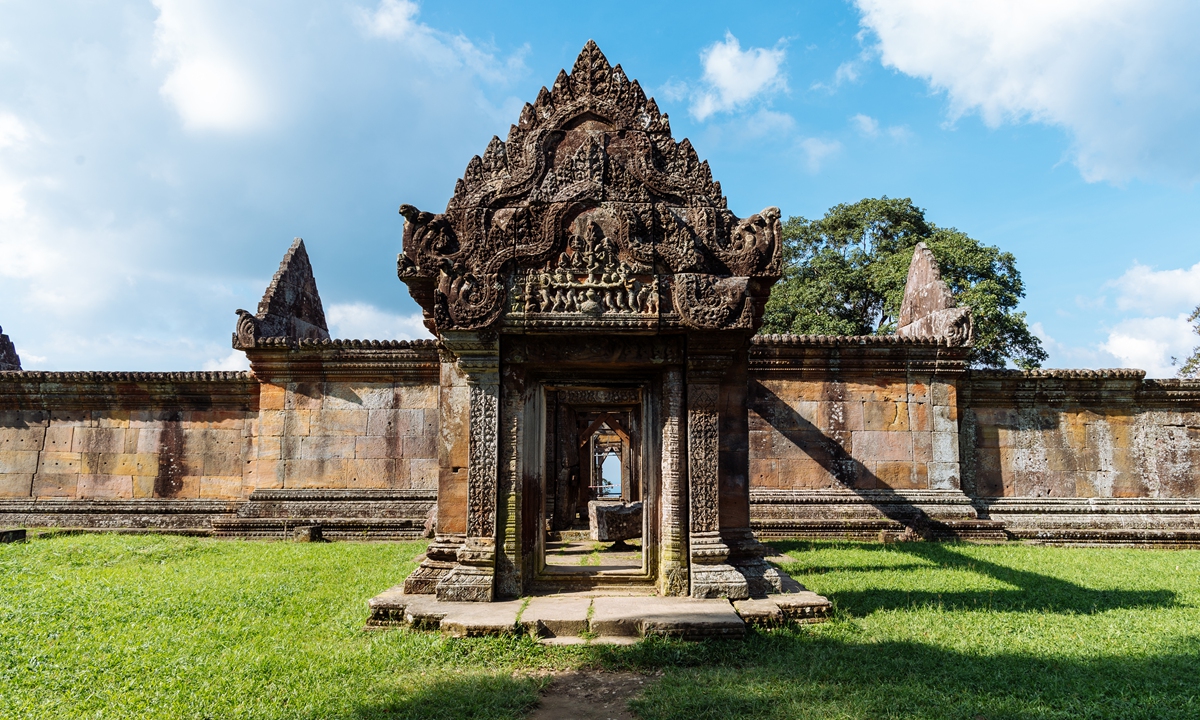
The Preah Vihear Temple, a UNESCO World Heritage Site, in the Preah Vihear Province, Cambodia. The temple is one of the cultural heritages that China and Cambodia have agreed to protect and restore in a recent joint statement. Photo: VCG
China and Cambodia signed a joint statement for coordinating the Asian Alliance for Cultural Heritage Conservation (AACHC) on Friday, a great move for the establishment of an Asian community with a shared future and better implementation of the Belt and Road Initiative (BRI), said Chinese experts on Sunday.
According to China's National Cultural Heritage Administration, the joint statement stated that the two countries will carry out cooperation in the fields of endangered cultural heritage protection, joint archaeology, cultural relic restoration, museum exchanges, combating cultural relic smuggling and training of young talents under the framework of the AACHC. The AACHC is the first mechanism for international cooperation on the conservation of cultural heritage across Asia and aims to deepen exchanges between civilizations and jointly build an Asian community with a shared future.
Huo Zhengxin, a professor of law and vice dean of the Faculty of International Law at the China University of Political Science and Law, told the Global Times on Sunday that China and Cambodia have carried out a lot of economic and business exchanges under the framework of the BRI and that this statement is of great significance, particularly for the protection of the cultural heritage of both countries.
He pointed out that providing corresponding international cooperation and assistance to Cambodia reflects China's international obligation as an ancient cultural civilization.
"China's technology and skills in cultural relic protection and archaeology have reached an advanced position in the world. We can provide some Chinese experience to the world, especially to BRI members, most of which boast fruitful cultural heritages," he said.
According to the joint statement, both sides agreed to promote China-aid Project of Royal Palace Restoration in Angkor and protection and restoration of Preah Vihear Temple and other cultural heritages, and are committed to a joint action to preserve Asian cultural heritage, exploring the establishment of China-Cambodia joint working group on cultural heritages, to promote across-the-spectrum cooperation.
Both sides agreed to continue working on the platform of the Asian Cultural Council to strengthen the cooperation in promoting peace, prosperity and solidarity through mutual understanding, respect, trust and interest and to connect the civilizations of Asia.
For years, the two countries have jointly carried out the conservation and restoration of cultural heritage. Since 1997, China has helped restore the famed Angkor Archaeological Park. Covering an area of 401 square kilometers, the park consists of scores of key temples that reveal the historical picture of the different capitals of the Khmer Empire from the ninth to the 15th century.
Jia Xiaobing, a research fellow at the Chinese Academy of Social Sciences' Institute of Archaeology, told the Global Times that Chinese archaeology is an important part of world archaeology and that a comprehensive and in-depth study of world archaeology cannot be achieved without Chinese archaeology.
"With the increase of joint international cooperation in Chinese archaeology, I believe China can further establish our discourse power and make a breakthrough in the world's old research systems," he said.




